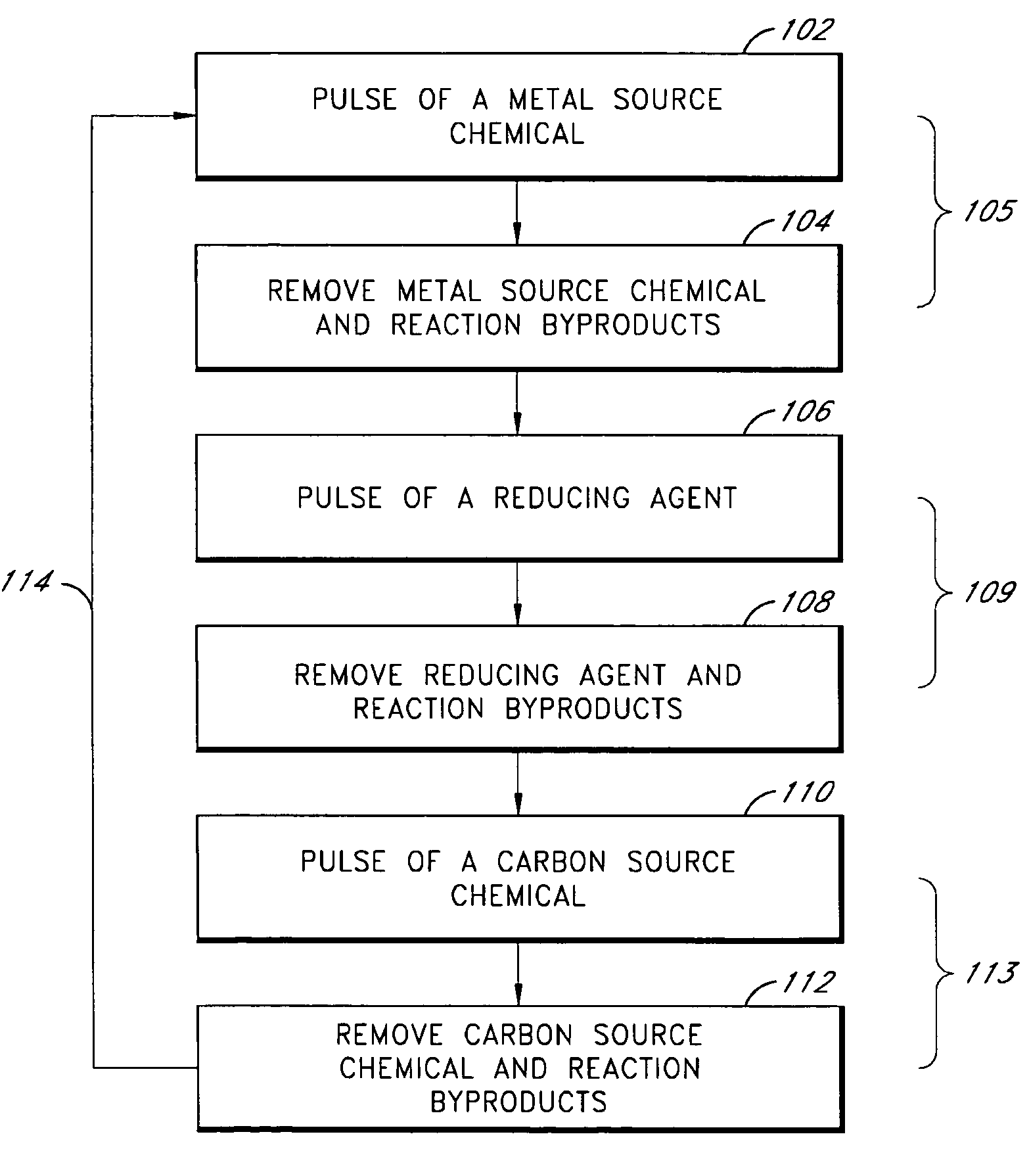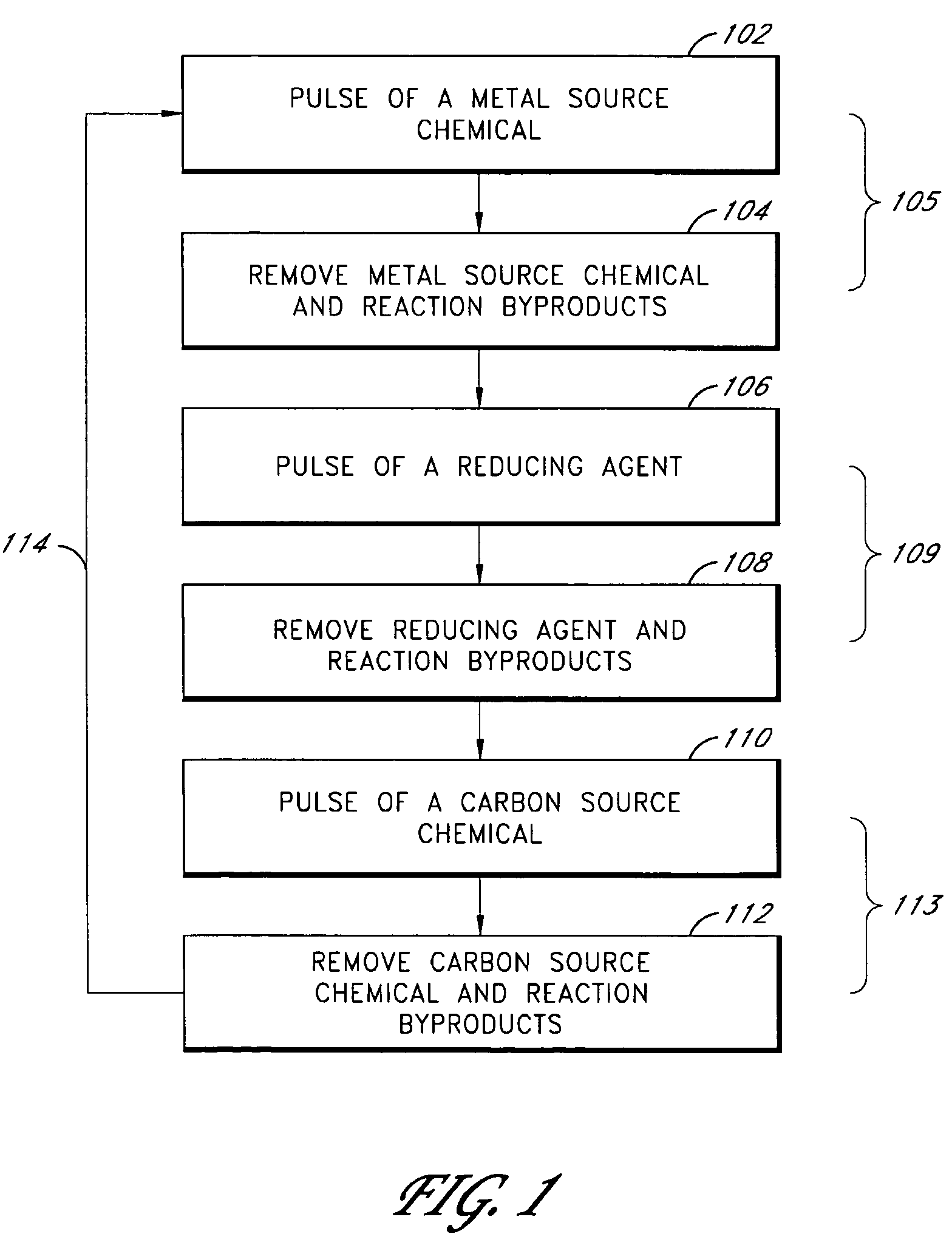Vapor deposition of metal carbide films
a metal carbide film and vapor deposition technology, applied in the field of metal carbide thin film vapor deposition, can solve the problems of insufficient thin film coverage in shaded areas of complex substrate contours, high relative temperature of substrates, and difficult to obtain important film coverage in deep vias, etc., and achieve the effect of plasma-enhanced atomic layer deposition process
- Summary
- Abstract
- Description
- Claims
- Application Information
AI Technical Summary
Benefits of technology
Problems solved by technology
Method used
Image
Examples
example
[0069]A tantalum carbide film was deposited on a silicon dioxide (SiO2) substrate in an ALD-type process. The sequence of steps included alternately and sequentially contacting a silicon substrate comprising native oxide with spatially and temporally separated vapor phase pulses of tantalum fluoride (TaF5), hydrogen radicals (“H2*”) and a carbon source chemical (TEB or C2H2). The substrate was supported on a susceptor in a PEALD reactor. Deposition was conducted at a susceptor temperature between about 300° C.-350° C. The reactor pressure was about 3 torr. The TaF5 source gas was held at a temperature of about 125° C. Argon (Ar) was introduced into the reactor at a flow rate of approximately 650 sccm and served as a carrier and purge gas. H2* was generated by supplying plasma power (about 100-400 W) to a showerhead disposed over the substrate while flowing hydrogen gas. The showerhead temperature was maintained at about 250° C. The sequence of gas pulses and pulsing times (milliseco...
PUM
| Property | Measurement | Unit |
|---|---|---|
| thickness | aaaaa | aaaaa |
| thickness | aaaaa | aaaaa |
| thickness | aaaaa | aaaaa |
Abstract
Description
Claims
Application Information
 Login to View More
Login to View More - R&D
- Intellectual Property
- Life Sciences
- Materials
- Tech Scout
- Unparalleled Data Quality
- Higher Quality Content
- 60% Fewer Hallucinations
Browse by: Latest US Patents, China's latest patents, Technical Efficacy Thesaurus, Application Domain, Technology Topic, Popular Technical Reports.
© 2025 PatSnap. All rights reserved.Legal|Privacy policy|Modern Slavery Act Transparency Statement|Sitemap|About US| Contact US: help@patsnap.com



